
The steps for the 1849 church were made of Aquia Sandstone. Aquia sandstone was quarried on what is now Government Island in Stafford County as early as the late 1690s and can be found on such historical structures as Mount Vernon, the Capitol and the White House.
The stone quarried here was used in a variety of locations in Virginia including William’s Ordinary in Dumfries, Aquia Church, and Gunston Hall. George Washington, who had used Aquia freestone for the steps at Mt. Vernon in 1786, selected the Aquia freestone as the building material for the White House and U.S. Capitol buildings in the new Federal District. Pierre L’Enfant purchased Wigginton’s Island also known as Brent’s Island on behalf of the U.S. Government for $6,000 on Dec. 2, 1791, to provide access to the freestone that was quarried there.
The stone was taken on rafts down Aquia Creek to the Potomac River where it was poled upstream to the new federal city, then dressed into smaller blocks on the riverbank, then transported by wagon inland
The sandstone is typically gray or tan, sometimes with streaks or shades of red, yellow or buff, giving the stone a warm effect. It was easily shaped into the purpose intended.
Use of the stone for exterior use declined as its shortcomings became apparent. One of the last major uses of the material was at the U.S. Capitol gatehouses and gateposts, designed by Charles Bulfinch about 1827.
The shortcomings of the stone have been documented. The Smithsonian says that the Aquia stone “contains too much clay to be very durable. It also has other flaws that can cause big problems for a building stone: isolated large pebbles and clay lumps, and uncemented areas.” The sandstone was subject to deterioration as well as discoloration. Holes developed in the surfaces
By the Civil War, the quarry was closed and abandoned.
St. George’s use for its steps was relatively late use of the stone. Over time problems developed including cracks in the stone, some deterioration of surfaces, deterioration of mortar and poor supports under the steps. Many of the issues were man-made, including poor fill repairs
Here are some of the pictures of the issues:


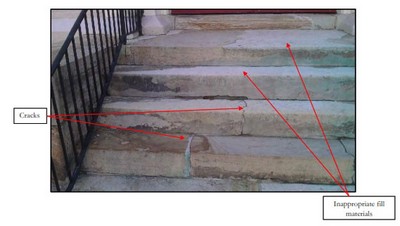
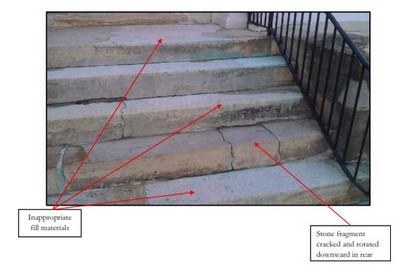
In 2011, Tidewater Restoration was hired to fix the steps. The cost was $84,510.
The steps were cleaned and removed in stages for repairs. Brick foundations were reconstructed for greater stability. The brick used was handmade Old Carolina brick. The brick was re-pointed in hydraulic lime mortar and matched to the original color. All cracks were to be filled with a new synthetic mortar. The iron railings were also refinished.
It was the case of both and replacing part of the steps. Those stones that could not be repaired have been replaced with a stone called “Ohio Sandstone which is similar in appearance.
Before and After Pictures of each of the three sections (north, center and south are included).
NORTH (Left)
Before

After

CENTER
Before
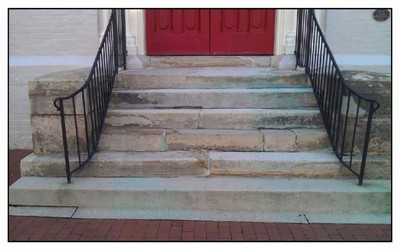
After
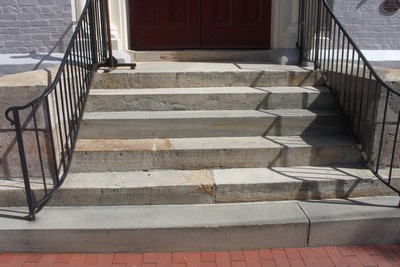
SOUTH (Right)
Before
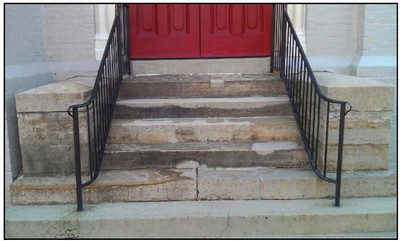
After

